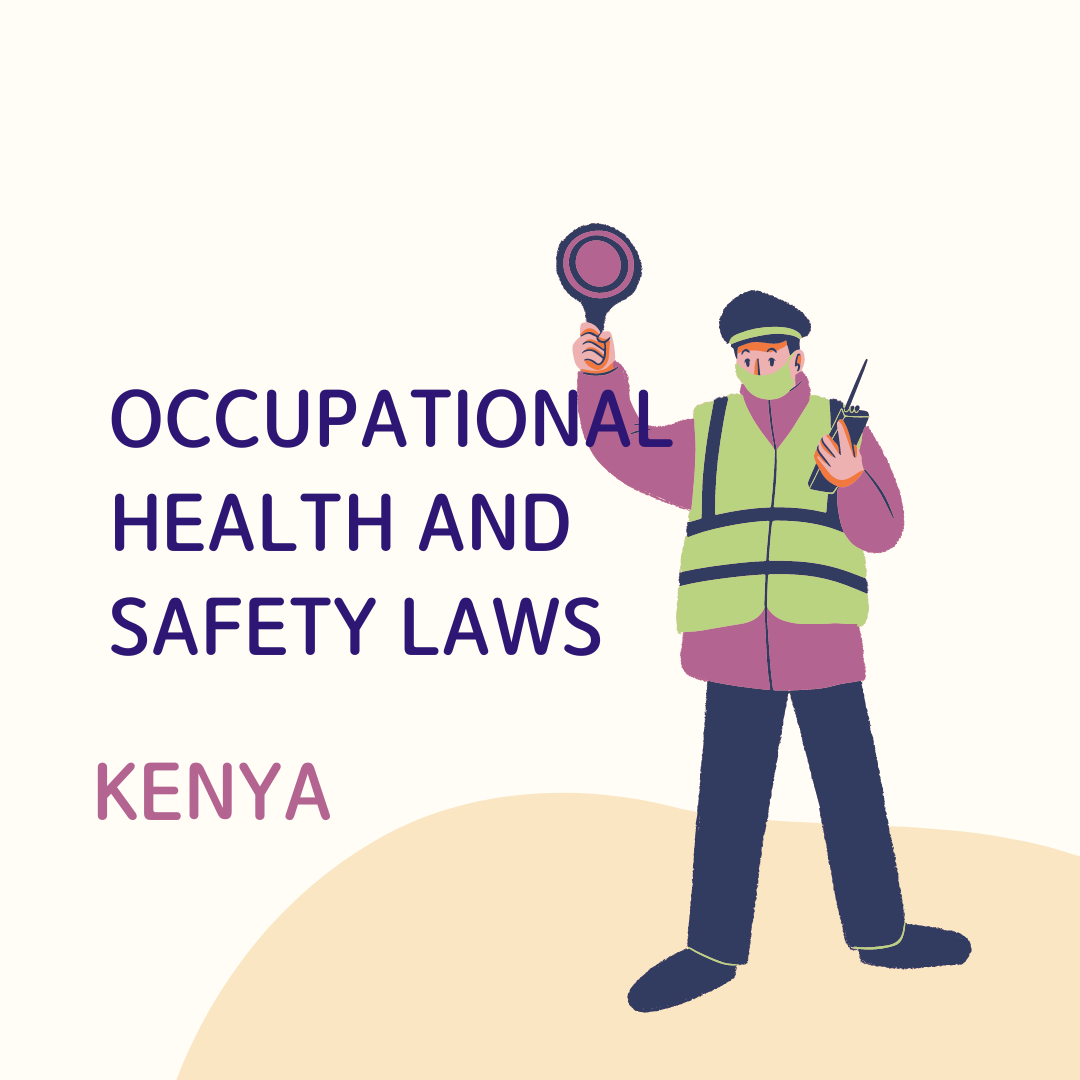
Introduction
The Occupational Health and Safety Act in Kenya is a crucial legislative framework designed to protect the health and safety of workers across various industries. This blog provides an in-depth summary of the key aspects of the Occupational Health and Safety Act in Kenya, with a focus on the 2007 and 2017 versions, as well as insights into the 2020 amendment.
Occupational Health and Safety Act, 2007
The Occupational Safety and Health Act, of 2007, was the primary legislation that governed occupational health and safety in Kenya. This act outlines the responsibilities of employers, employees, and contractors in providing a safe and healthy working environment. It emphasized the importance of risk assessment, hazard identification, and the implementation of necessary control measures to prevent workplace accidents and injuries. The act also mandates the formation of workplace safety committees to ensure ongoing safety improvements and communication between workers and management.
Occupational Health and Safety Act, 2017
In 2017, Kenya made significant strides in enhancing workplace safety with the enactment of the updated Occupational Health and Safety Act. This version expands on the previous legislation, taking into account modern workplace challenges and advancements. The act introduces stringent measures for hazardous industries and emphasizes the need for comprehensive safety training and reporting mechanisms. Moreover, it emphasizes the responsibility of employers to provide personal protective equipment (PPE) to employees and enforce its proper usage to mitigate risks effectively.
Occupational Health and Safety Policy in Kenya
Alongside the Occupational Health and Safety Act, Kenya has also formulated an Occupational Health and Safety Policy to complement the legal framework. This policy outlines the government’s commitment to promoting a culture of safety in the workplace. It encourages employers to adopt proactive measures for injury prevention, implement health and safety management systems, and foster a safe work environment that prioritizes the well-being of employees.
Occupational Health and Safety Act, 2020 O
The most recent development in Kenya’s commitment to occupational health and safety is the 2020 amendment to the existing legislation. This amendment aims to address emerging challenges, align with international best practices, and promote continuous improvement in workplace safety standards. It introduces updated guidelines for industries that have evolved since the 2017 version, and it focuses on empowering workers to actively participate in identifying and mitigating workplace hazards.
Occupational health and safety regulations in Kenya
In addition to the Occupational Health and Safety Act, Kenya also enforces specific regulations to reinforce workplace safety standards. These regulations serve as detailed guidelines to ensure compliance with the overarching legal framework and address industry-specific concerns. Let’s delve deeper into some key occupational health and safety regulations in Kenya:
Workplace Hazardous Chemicals Regulations
These regulations focus on the safe handling, storage, and disposal of hazardous chemicals in the workplace. Employers are required to conduct a comprehensive chemical risk assessment and provide relevant safety information and training to employees dealing with these substances. Proper labelling and the use of personal protective equipment are also emphasized to minimize potential health risks.
Construction (Health and Safety) Regulations
The construction industry carries inherent risks, making these regulations critical for safeguarding the well-being of workers. The regulations stipulate safety measures for construction sites, including fall protection, scaffolding, and the use of appropriate safety gear. Employers must also ensure regular inspection and maintenance of equipment and machinery to prevent accidents.
Occupational Health and Safety (General) Regulations
These regulations cover a wide range of workplace safety aspects applicable across various industries. They encompass issues such as fire safety, first aid, emergency response plans, and the provision of sanitary facilities. The regulations stress the need for continuous employee training and awareness programs to foster a safety-conscious work environment.
Occupational Health and Safety (Medical Examinations) Rules
These rules outline the requirements for medical examinations of employees exposed to specific occupational hazards. Workers in industries dealing with hazardous substances, noise, or radiation are typically required to undergo periodic medical assessments to ensure their health and fitness for the job.
Occupational Safety and Health (Chemical Agents) Regulations
Addressing the risks associated with chemical exposure, these regulations mandate employers to assess, control, and monitor chemical agents’ impact on workers. Employers are also required to provide information, training, and access to relevant safety data sheets to all employees handling or exposed to chemicals.
Occupational Health and Safety (Noise) Regulations
With the recognition of noise-induced hearing loss as a significant concern, these regulations prescribe noise exposure limits for different types of work environments. Employers must implement engineering controls and provide appropriate hearing protection devices to minimize noise-related health risks.
Occupational Health and Safety Policies
Crafting a compelling occupational health and safety (OHS) policy is essential to prioritize employee well-being and ensure a safe work environment. An OHS policy serves as an employer’s written commitment to the health and safety of their workforce and workplace. In compliance with health and safety legislation, every employer must establish effective workplace health and safety programs. Here’s all you need to know about creating a powerful OHS policy that fosters safety and protects your employees.
Conclusion
Occupational health and safety are vital elements of a productive and responsible workforce. The Occupational Health and Safety Act in Kenya, along with subsequent amendments and policy implementations, signifies the government’s commitment to protecting workers and ensuring their well-being. Employers and employees must be aware of their roles and responsibilities under these legislative frameworks to foster a safer work environment. By adhering to these laws and promoting a culture of safety, Kenya can continue its journey towards reducing workplace accidents and promoting a healthier and more productive workforce.
Occupational health and safety regulations in Kenya play a pivotal role in safeguarding workers and fostering a culture of workplace safety. Complementing the Occupational Health and Safety Act, these regulations address specific hazards across various industries, ensuring comprehensive protection for employees. By adhering to these regulations, employers demonstrate their commitment to the well-being of their workforce, promoting a healthy and safe work environment where employees can thrive and contribute to the nation’s growth.





